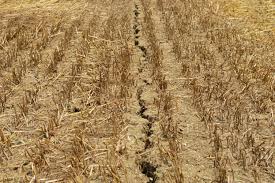“Agroecological farming can nurture biodiversity, sequester carbon and regenerate the planet by looking after our soil.”
“A more attentive approach to soil biodiversity soil management is urgently needed, not only for safe food security but particularly for flood protection!”
.
We need to take care of the soil in our own back yards:
“Soil is the most biodiverse place in the Sid Valley.”
Looking after our soil in our gardens | visionforsidmouth.org
But we also need to take care of the soil in our fields – because it’s about “restoring balance in the natural carbon cycle”:
The role of carbon on the farm | visionforsidmouth.org
“Soil is our best ally in the fight against climate change. Storing more carbon in the soil helps to remove carbon dioxide from the atmosphere. But it also helps release nutrients for plant growth and improves the structure of the soil.”
Looking after our soil | visionforsidmouth.org
As pointed out in Glasgow:
Farming @ COP26 | visionforsidmouth.org
Or not:
“It’s outrageous that so little time at Cop26 has been devoted to agroecological farmers,” [Jyoti Fernandes, a Dorset farmer and policy and campaigns coordinator at the Landworkers’ Alliance] says. “The programme is very weak. If they are promoting nature we must talk about farming. Agroecological farming can nurture biodiversity, sequester carbon and regenerate the planet by looking after our soil, creating habitat and planting trees.”
The cow in the room: why is no one talking about farming at Cop26? | theguardian.com
Taking care of the soil is also about restoring the balance of the water cycle – as pointed out by the European ARC group:
Flood Protection – Let’s Start with Soil

Climate change and floods
The intensity of heavy rainfall events in summer and winter has increased significantly in northern and north-eastern Europe since the 1960s. Heavy rainfall is likely to become more frequent in most parts of Europe as a result of climate change. A German study on extreme weather conditions relevant to agriculture, has postulated an increase in the risk of flooding and erosion already in 2015.
Soil compaction ignored
The soils no longer hold water in the area – the “rain retention capacity” decreases. Three important soil functions are disturbed at the same time: the capacity to absorb rain (infiltration -> erosion and flood protection), the storage capacity (-> adaptation to climate change, securing harvests) and groundwater purification and recharge capacity (-> delivery of ground and drinking water). This can be seen especially in spring on flat land: On more and more arable land, the water stands longer and longer. On the other hand, periods of drought cause massive crop damage because the water was on the soils but could no longer be infiltrated and stored by them.
Sound soil structure only with vital soil life
One gram of sound soil can contain up to 600 million bacteria of various species, as well as fungi, algae, protozoa, nematodes, earthworms, mites, isopods, springtails, insect larvae etc.. Extrapolated to one hectare, this amounts to about 15 tonnes of live weight, which is comparable to the weight of 20 cows.
Soils can be water reservoirs …
If the soil is in good condition, i.e. not sealed, crusted or compacted, then most of the rain that falls on it seeps in. Under natural conditions, part of the water is stored for a longer period of time and is available to plants and soil animals, the rest seeps downwards purified and contributes to groundwater formation. But this is deeply dependent on biological structure building and biological water purification processes. Promoting high biological activity in the soil is THE fundamental principle of organic farming and it is regularly confirmed that organic is particularly effective here. This system thus supports a good soil structure that is less susceptible to erosion and can store significantly more water. Soil erosion is also significantly reduced in organic farming, as many studies show. This is largely due to the much higher aggregate stability.
…which also help food security
The benefit lies not only in the prevention of floods and erosion. Agriculture itself benefits directly when water absorption and storage capacity of the soil increases. This not only helps to prevent erosion. Crop security increases significantly when soils have a balanced water cycle and can store water well.
Conclusion
Modern flood risk management must focus much more on different agricultural management effects: a more attentive approach to soil biodiversity soil management is urgently needed, not only to safe food security but particularly for flood protection!